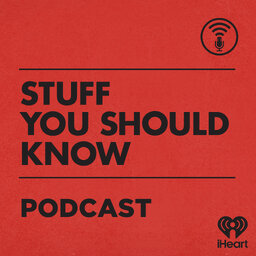How do butterfly wings get their color?
Butterflies' wings are colored as a result of iridescence; this fascinating optical phenomenon is the result of light refracting off transparent surfaces. Josh and Chuck reveal how pigmentation, iridescence, light and butterfly wings work in this episode.
Learn more about your ad-choices at https://www.iheartpodcastnetwork.com
 Stuff You Should Know
Stuff You Should Know


